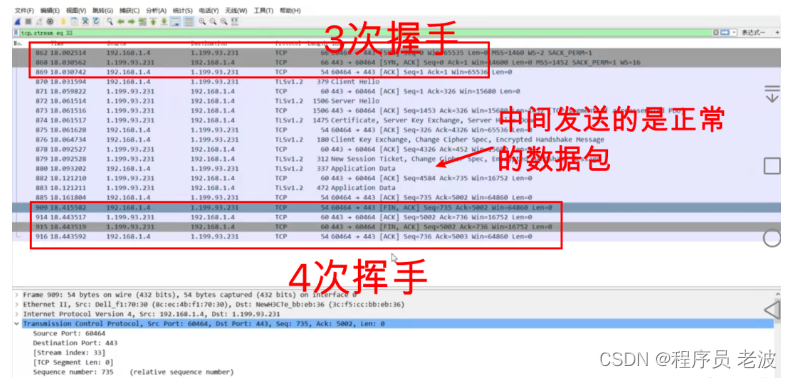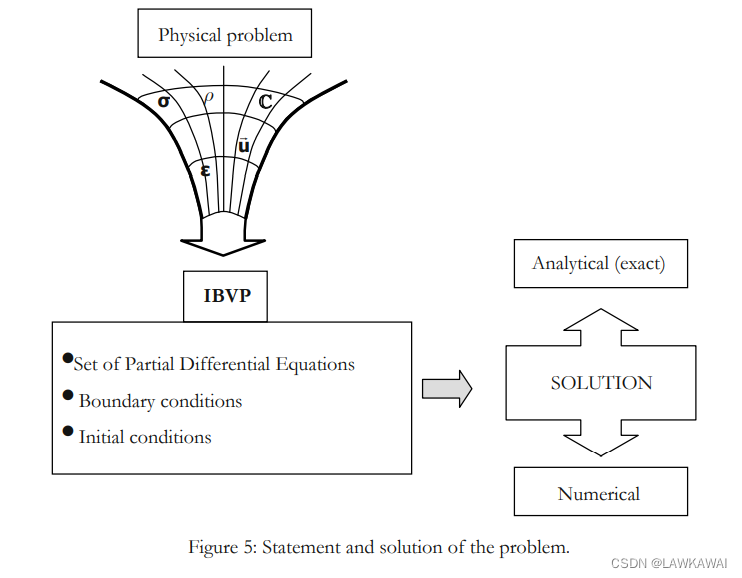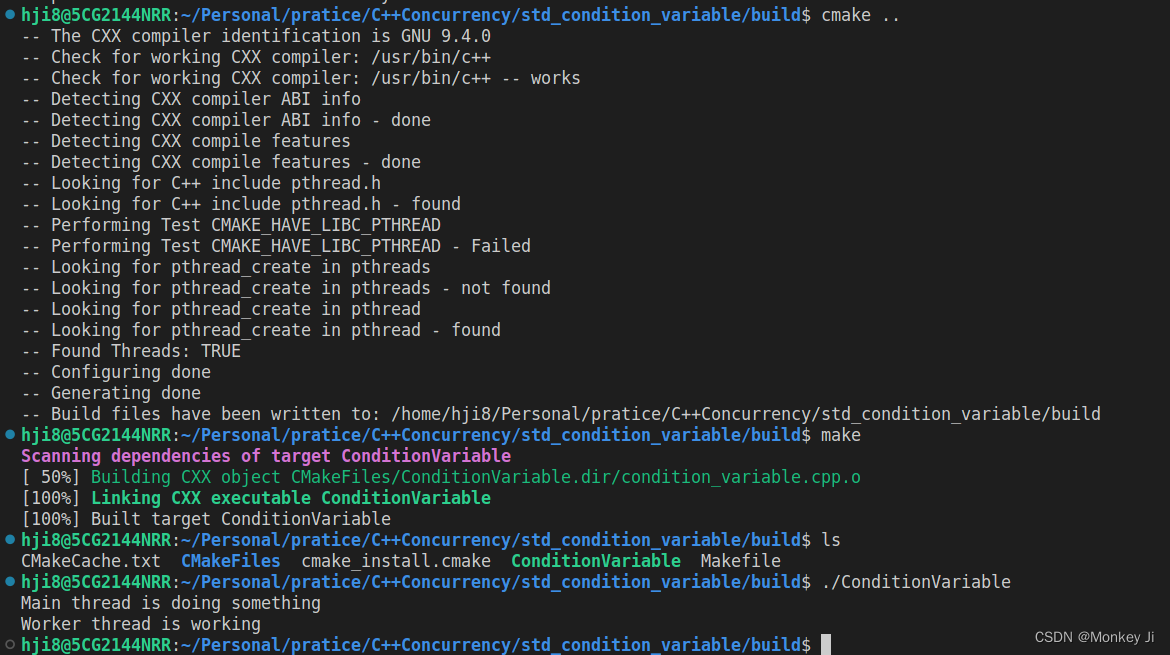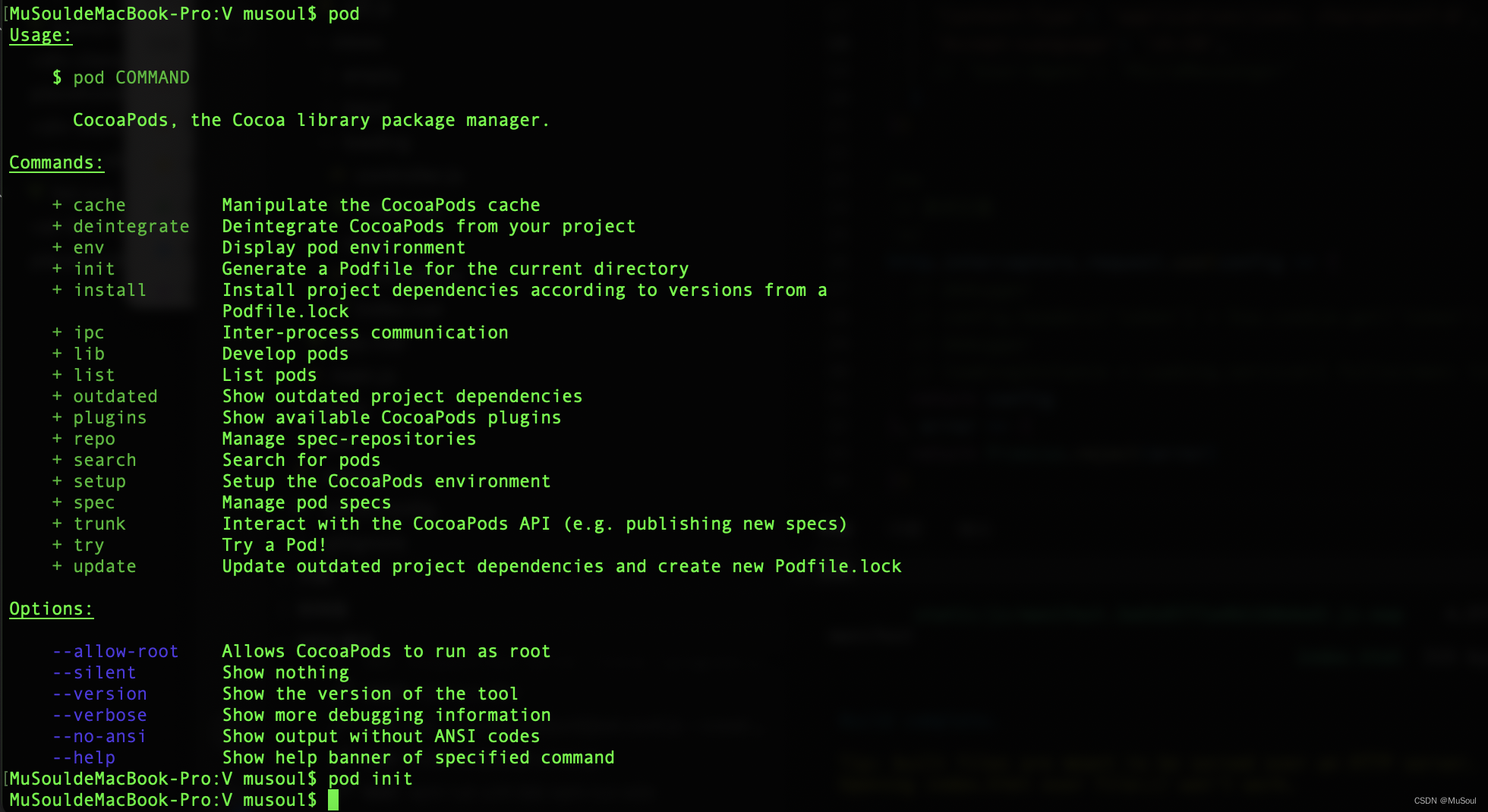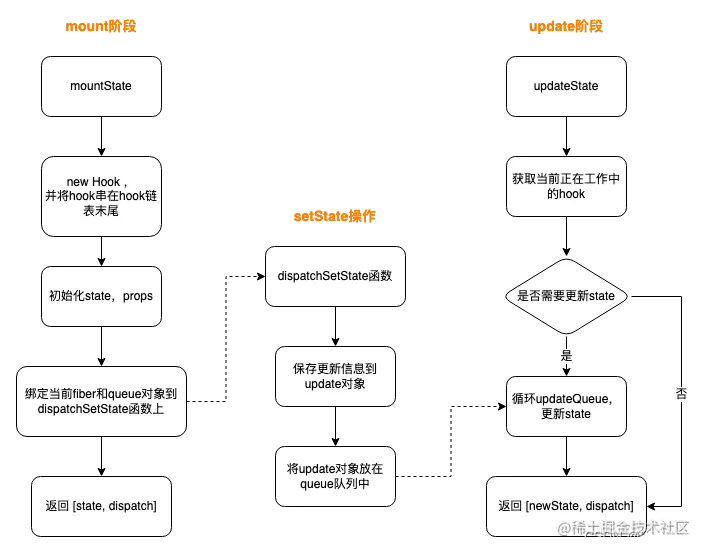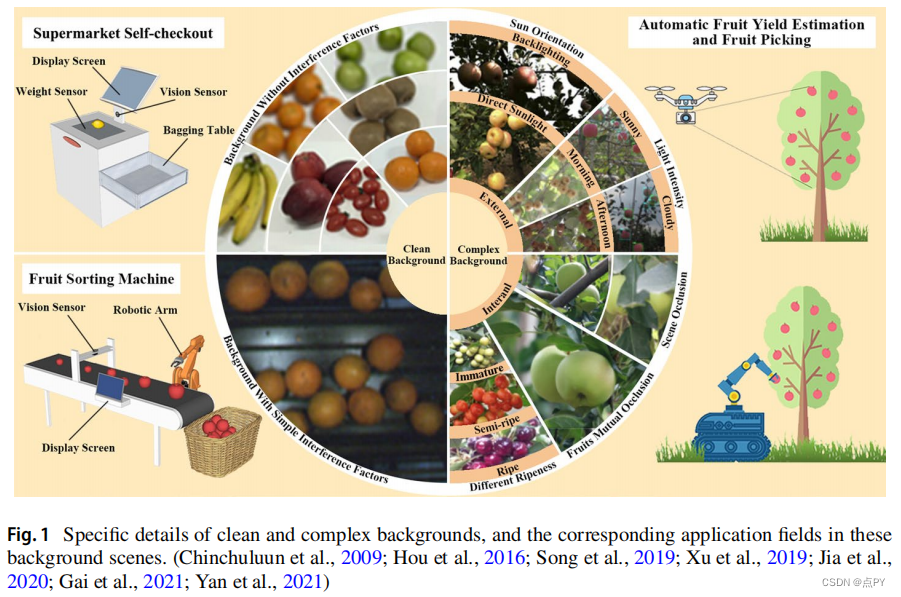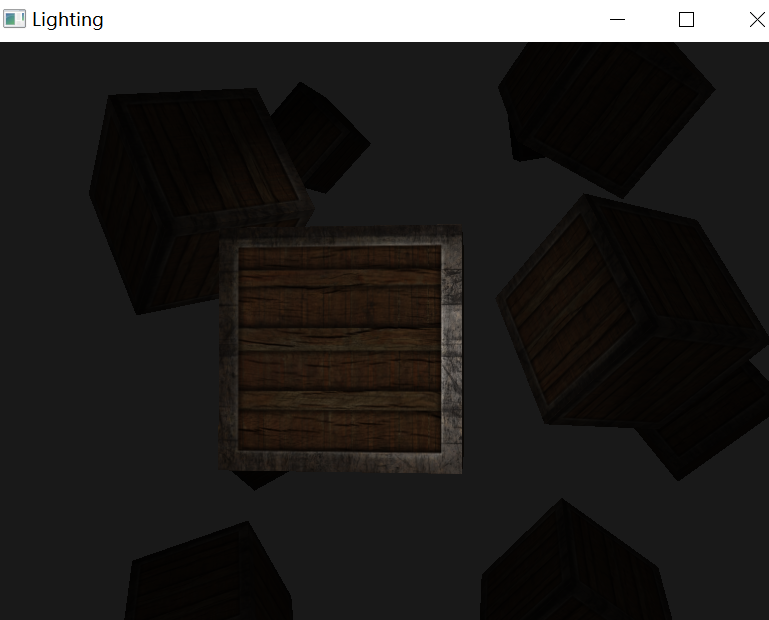1、二叉树的层序遍历
二叉树的层序遍历,就是图论中的广度优先搜索在二叉树中的应用,需要借助队列来实现(此时又发现队列的一个应用了)。
来吧,一口气打十个:
102.二叉树的层序遍历
class Solution {
public List<List<Integer>> levelOrder(TreeNode root) {
List<List<Integer>> res = new ArrayList<>();
if(root == null) return res;
//队列存储,进行层序遍历
Queue<TreeNode> q = new ArrayDeque<>();
//第一个入队
q.add(root);
while(!q.isEmpty()){
//记录每一行的
ArrayList<Integer> row = new ArrayList<>();
int n = q.size();
//因为先进入的是根节点,故每层节点多少,队列大小就是i多少
for(int i=0;i<n;i++){
//接收临时
TreeNode cur = q.poll();
row.add(cur.val);
//若是左右孩子存在,则存入左右孩子作为下一次层次
if(cur.left!=null) q.add(cur.left);
if(cur.right !=null) q.add(cur.right);
}
//每一层加入输出
res.add(row);
}
return res;
}
}
107.二叉树的层次遍历II
class Solution {
public List<List<Integer>> levelOrderBottom(TreeNode root) {
List<List<Integer>> res = new ArrayList<>();
if(root == null) return res;
//队列存储,进行层序遍历
Queue<TreeNode> q = new ArrayDeque<>();
//第一个入队
q.add(root);
while(!q.isEmpty()){
//记录每一行的
ArrayList<Integer> row = new ArrayList<>();
int n = q.size();
//因为先进入的是根节点,故每层节点多少,队列大小就是i多少
for(int i=0;i<n;i++){
//接收临时
TreeNode cur = q.poll();
row.add(cur.val);
//若是左右孩子存在,则存入左右孩子作为下一次层次
if(cur.left!=null) q.add(cur.left);
if(cur.right !=null) q.add(cur.right);
}
//每一层加入输出
res.add(row);
}
List<List<Integer>> res1 = new ArrayList<>();
for(int i=res.size()-1;i>=0;i--){
res1.add(res.get(i));
}
return res1;
}
}
199.二叉树的右视图
class Solution {
public List<Integer> rightSideView(TreeNode root) {
// List<List<Integer>> res = new ArrayList<>();
List<Integer> list = new ArrayList<>();
if(root == null) return list;
//队列存储,进行层序遍历
Queue<TreeNode> q = new ArrayDeque<>();
//第一个入队
q.add(root);
while(!q.isEmpty()){
//记录每一行的
ArrayList<Integer> row = new ArrayList<>();
int n = q.size();
//因为先进入的是根节点,故每层节点多少,队列大小就是i多少
for(int i=0;i<n;i++){
//接收临时
TreeNode cur = q.poll();
row.add(cur.val);
//若是左右孩子存在,则存入左右孩子作为下一次层次
if(cur.left!=null) q.add(cur.left);
if(cur.right !=null) q.add(cur.right);
}
//每一层加入输出
list.add(row.get(row.size()-1));
}
return list;
}
}
637.二叉树的层平均值
class Solution {
public List<Double> averageOfLevels(TreeNode root) {
List<Double> list = new ArrayList<>();
if(root == null) return list;
//队列存储,进行层序遍历
Queue<TreeNode> q = new ArrayDeque<>();
//第一个入队
q.add(root);
while(!q.isEmpty()){
//记录每一行的
double levelSum = 0.0;
int n = q.size();
//因为先进入的是根节点,故每层节点多少,队列大小就是i多少
for(int i=0;i<n;i++){
//接收临时
TreeNode cur = q.poll();
levelSum += cur.val;
//若是左右孩子存在,则存入左右孩子作为下一次层次
if(cur.left!=null) q.add(cur.left);
if(cur.right !=null) q.add(cur.right);
}
//每一层加入输出
list.add(levelSum / n);
}
return list;
}
}
429.N叉树的层序遍历
class Solution {
public List<List<Integer>> levelOrder(Node root) {
List<List<Integer>> res = new ArrayList<>();
if(root == null) return res;
//队列存储,进行层序遍历
Queue<Node> q = new ArrayDeque<>();
//第一个入队
q.add(root);
while(!q.isEmpty()){
//记录每一行的
ArrayList<Integer> row = new ArrayList<>();
int n = q.size();
//因为先进入的是根节点,故每层节点多少,队列大小就是i多少
for(int i=0;i<n;i++){
//接收临时
Node cur = q.poll();
row.add(cur.val);
// //若是左右孩子存在,则存入左右孩子作为下一次层次
// if(cur.left!=null) q.add(cur.left);
// if(cur.right !=null) q.add(cur.right);
List<Node> children = cur.children;
if(children == null || children.size()==0) continue;
for(Node child:children){
if(child!=null) q.add(child);
}
}
//每一层加入输出
res.add(row);
}
return res;
}
}
515.在每个树行中找最大值
class Solution {
public List<Integer> largestValues(TreeNode root) {
List<Integer> res = new ArrayList<>();
if(root == null) return res;
Queue<TreeNode> q = new ArrayDeque<>();
q.add(root);
while(!q.isEmpty()){
//记录最大值
int maxVal = Integer.MIN_VALUE;
int len = q.size();
for(int i=0;i<len;i++){
//当前访问节点
TreeNode cur = q.poll();
if(maxVal<cur.val) maxVal = cur.val;
//左右子树不为空进行记录
if(cur.left!=null) q.add(cur.left);
if(cur.right!=null) q.add(cur.right);
}
//结束时记录
res.add(maxVal);
}
return res;
}
}
116.填充每个节点的下一个右侧节点指针、
117.填充每个节点的下一个右侧节点指针II
class Solution {
public Node connect(Node root) {
if(root == null) return root;
Queue<Node> q = new LinkedList<>();
q.add(root);
while(!q.isEmpty()){
int len =q.size();
for(int i=0;i<len;i++){
//当前节点
Node cur = q.poll();
//指向next
if(i< len-1){
cur.next = q.peek() ;//出了队列,因此peek指向的就是下一个元素
}
//把node的左右孩子加入
if(cur.left!=null) q.add(cur.left);
if(cur.right!=null) q.add(cur.right);
}
}
return root;
}
}
104.二叉树的最大深度
class Solution {
public int maxDepth(TreeNode root) {
List<List<Integer>> res = new ArrayList<>();
if(root == null) return 0;
//队列存储,进行层序遍历
Queue<TreeNode> q = new ArrayDeque<>();
//第一个入队
q.add(root);
while(!q.isEmpty()){
//记录每一行的
ArrayList<Integer> row = new ArrayList<>();
int n = q.size();
//因为先进入的是根节点,故每层节点多少,队列大小就是i多少
for(int i=0;i<n;i++){
//接收临时
TreeNode cur = q.poll();
row.add(cur.val);
//若是左右孩子存在,则存入左右孩子作为下一次层次
if(cur.left!=null) q.add(cur.left);
if(cur.right !=null) q.add(cur.right);
}
//每一层加入输出
res.add(row);
}
return res.size();
}
}
、
class Solution {
public int maxDepth(TreeNode root) {
if (root == null) return 0;
Queue<TreeNode> que = new LinkedList<>();
que.offer(root);
int depth = 0;
while (!que.isEmpty())
{
int len = que.size();
while (len > 0)
{
TreeNode node = que.poll();
if (node.left != null) que.offer(node.left);
if (node.right != null) que.offer(node.right);
len--;
}
depth++;
}
return depth;
}
}
111.二叉树的最小深度
class Solution {
public int minDepth(TreeNode root) {
if(root == null) return 0;
Queue<TreeNode> q = new LinkedList<>();
q.add(root);
int depth = 0;
while(!q.isEmpty()){
int len = q.size();
depth++;
for(int i=0;i<len;i++){
TreeNode cur = q.poll();
//如果当前节点的左右子树都为空,说明就是最小高度
if(cur.left == null && cur.right == null) return depth;
if(cur.left !=null) q.add(cur.left);
if(cur.right !=null) q.add(cur.right);
}
}
return depth;
}
}
2、226. 翻转二叉树
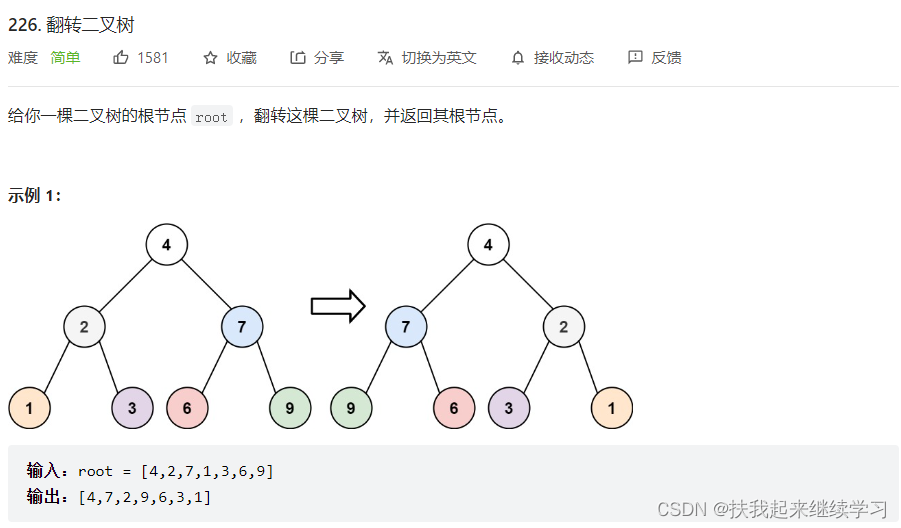
DFS
class Solution {
public TreeNode invertTree(TreeNode root) {
//使用前序遍历
if(root == null) return null;
//前
swap(root);
invertTree(root.left);
invertTree(root.right);
return root;
}
public void swap(TreeNode node){
TreeNode temp = node.left;
node.left = node.right;
node.right = temp;
}
}
BFS
class Solution {
public TreeNode invertTree(TreeNode root) {
//使用前序遍历
// if(root == null) return null;
// //前
// swap(root);
// invertTree(root.left);
// invertTree(root.right);
// return root;
if(root == null) return null;
//层序遍历
Queue<TreeNode> q = new LinkedList<>();
q.add(root);
while(!q.isEmpty()){
int len = q.size();
for(int i=0;i<len;i++){
TreeNode cur = q.poll();
swap(cur);
if(cur.left!=null) q.add(cur.left);
if(cur.right!=null) q.add(cur.right);
}
}
return root;
}
public void swap(TreeNode node){
TreeNode temp = node.left;
node.left = node.right;
node.right = temp;
}
}
3、101. 对称二叉树
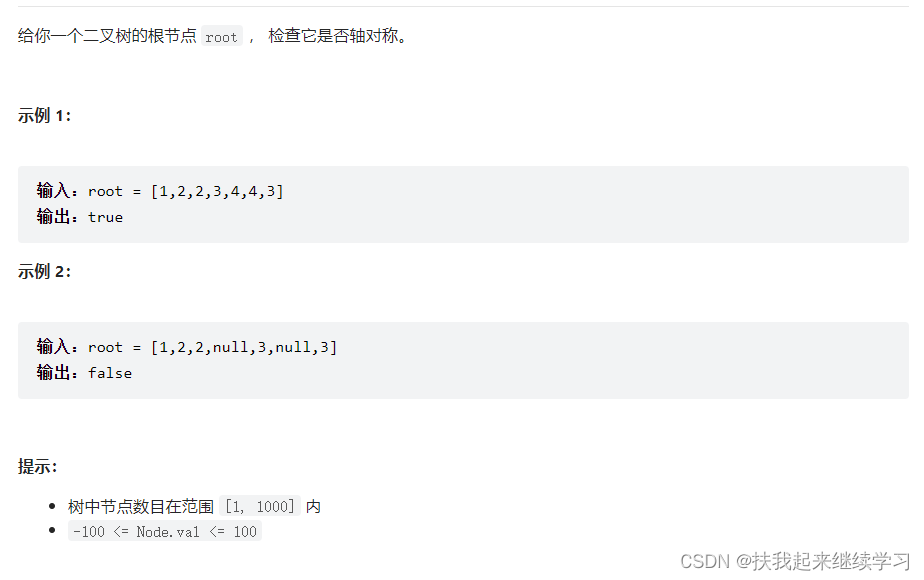
左节点为空,右节点不为空,不对称,return false
左不为空,右为空,不对称 return false
左右都为空,对称,返回true
此时已经排除掉了节点为空的情况,那么剩下的就是左右节点不为空:
左右都不为空,比较节点数值,不相同就return false
此时左右节点不为空,且数值也不相同的情况我们也处理了。
/**
* Definition for a binary tree node.
* public class TreeNode {
* int val;
* TreeNode left;
* TreeNode right;
* TreeNode() {}
* TreeNode(int val) { this.val = val; }
* TreeNode(int val, TreeNode left, TreeNode right) {
* this.val = val;
* this.left = left;
* this.right = right;
* }
* }
*/
class Solution {
public boolean isSymmetric(TreeNode root) {
return compare(root.left,root.right);
}
public boolean compare(TreeNode left,TreeNode right){
//左节点为空,右节点不为空,不对称,return false
if(left == null && right !=null) return false;
//左节点不为空,右节点为空,不对称
if(left!=null && right == null) return false;
//左右节点都为空,说明对称
if(left==null && right == null) return true;
//左节点不等于右节点
if(left.val !=right.val){
return false;
}
//比较外侧
boolean c = compare(left.left,right.right);
//比较内测
boolean d = compare(left.right,right.left);
return c&&d;
}
}

